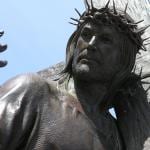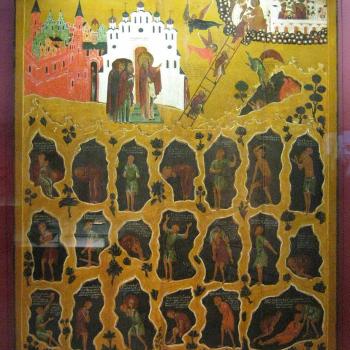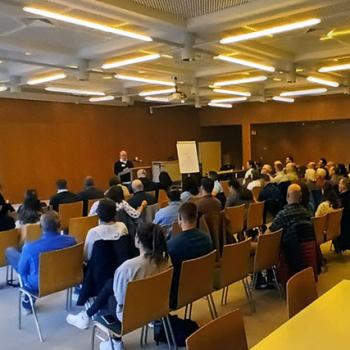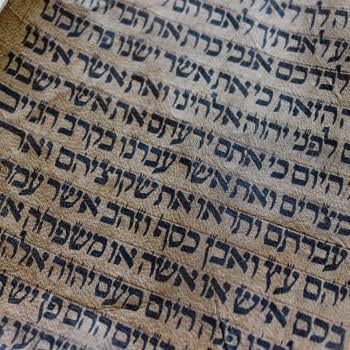Becoming The Gospel: Paul, Participation, and Mission is written by Dr. Michael J. Gorman. Dr. Gorman is an accomplished author and theologian who specializes in the theology and spirituality of Paul the Apostle[1]. At the seminary in which he teaches he has held the Raymond E. Brown chair of Biblical studies and theology since 2012[2]. Dr. Gorman earned his Master of Divinity and Ph.D. from Princeton Theological Seminary and has lectured in Catholic and Protestant churches and seminaries throughout the world[3]. Dr. Gorman is the author of several books in addition to the one being critiqued including Participating in Christ: Explorations in Paul’s Theology and Spirituality, Apostle of the Crucified Lord: A Theological Introduction to Paul and his Letters, and Cruciformity: Paul’s Narrative Spirituality of the Cross[4].
Theme Of Becoming The Gospel
The theme of the book is to encourage Christians to not simply believe the Gospel, but to become the Gospel[5]. In the introduction Dr. Gorman admits that this idea is not a new one and describes the work of David Congdon and his thesis of the Christian life being of the act, life, and mission of God[6]. However in describing his thesis, Dr. Gorman says he is in agreement with Congdon and describes his thesis as “theosis—Spirit-enabled transformative participation in the life and character of God revealed in the crucified and resurrected Messiah Jesus—is the starting point of mission”[7]. One of the strengths of the book is that the introduction cuts to the heart of what Dr. Gorman is trying to convey about Paul and evangelization. Those who participate in the life of Christ participate in the word redeeming work of Christ[8]. He describes the Gospel as revelatory and through theosis, we participate in the mission of God. Dr. Gorman is careful to describe what is meant by theosis here as some Christian traditions have a different meaning. In Gorman’s view it is the participation in the mission of God that is enabled by the Spirit for the Christian[9]. In essence the Christian is enabled to participate in the mission of God, and thus becomes the Gospel in a way.
The Image of God
The mission of God, or Missio Dei is brought to the forefront in chapter one. Gorman says that for Paul, and us by extension, hold that the mission of God is to bring salvation to the world for those who have faith[10]. Furthermore, the mission is one of liberation to liberate people from the power of sin and death[11]. One of the strengths of Chapter one is the emphasis of not only the Gospel message, but of not reading Paul with western eyes[12]. It is not about what God does in the individual, though that is important, but about God working through the churches to transform humanity[13]. Lastly Dr. Gorman gives seven reasons why Paul says salvation is participatory. There is a language of Baptism, parallel language about justification and faith, language of being in Christ and Christ within, language of being clothed with Christ, sharing, transformation of those who are in Christ, and the language of sharing Christ[14].
Becoming The Gospel and Hemeneutics
In Chapter two Dr. Gorman introduces what he calls the missional hermeneutic. This method of reading Paul focuses on interpreting him from a missions standpoint. This differs from the theological in that the focus is on the Christian community being sent to transform the people and places around them[15]. It emphasizes that mission is why the church exists, it is participation in God’s mission, and mission must be the governing framework[16]. Though I understand the point that Dr. Gorman is conveying, this is a weakness in the book in my opinion. There is no doubt that missions should be a focus, but it being the primary hermeneutic in which to interpret Paul is a bit a of a stretch. In his defense, Dr. Gorman anticipates this objection by stating the missional hermeneutic would bring to light the theological.
Theological Virtues
In Chapter three Dr. Gorman brings forward the three theological virtues of faith, hope, and love[17]. Most readers may think that in bring these virtues up that Dr. Gorman would begin discussing 1 Corinthians 13, but that is not the case. This “triad”, as he calls it, actually appears two times in 1 Thessalonians[18]. Gorman points out that Paul has a different order than we are used to and uses Faith, love, and hope. His explanation of these virtues is a strength of the book, and it is something that is not dealt with nearly enough. In his explanation Dr. Gorman states that Paul lists hope last to give it the greatest emphasis[19]. These virtues are emblematic of a spiritual battle about being steadfast and is about much more than an attitude[20]. As previously stated, the three virtues occur two times in 1 Thessalonians, and they do so at the beginning and the end of the book. This was not done by accident as one is prescriptive and the other is descriptive and describes the Christian identity that we have in Christ Jesus[21].
The Justice of God
In Chapters five and six Dr. Gorman describes peace, or shalom, or God and in chapter seven he pulls that together with the justice of God[22]. This is a strength as the justice of God goes hand in hand with the peace of God. This is something that is not discussed often, but Dr Gorman is up to the challenge. Justice is a biblical concept that we see in many parts of scripture, especially the Old Testament[23]. Regarding justice Dr. Gorman states that it is not only a mandate but part of being in a relationship with the almighty God. Some may see this and think judgment, but that is not what Dr. Gorman is attempting to say. Biblical justice is missional and includes taking care of the poor, the orphaned, and the widowed[24]. This is not something we do because it is nice and makes us feel good inside, but it is an extension of who God is. By doing this we are participating and becoming the Gospel. Justice is an attribute of God and is related to the peace of God[25]. One cannot exist without the other. Did this concept exist in the writings of Paul? Dr. Gorman admits that it is hard to find and that it is there if one is willing to look. He lays out seven links that Paul gives with justification and justice[26]. This part of the book is counted as a weakness in my view. By no means am I saying that a link does not exists, because they do. However, the links given by Dr. Gorman focus less on scriptural links and more on linguistic and behavioral links.
Becoming The Gospel Is Recommended
In conclusion this book is very challenging as it compels the believer to not merely believe but to be active. To be a Christian is to participate in the mission of God and involves more than just going to church on Sunday morning. Some may say this is works based righteousness, but that is not what Dr, Gorman is saying. What he is saying is that if we give ourselves over to God then we want to participate in his mission. The Gospel is about transformation and will lead to action[27]. The Holy Spirit works through those who believe.
This book is highly technical in some places and there is some ecumenical language, such as theosis, that may confuse those who cling to only one Christian tradition. With that being said this may not be the best book for the everyday person in the pew though the message is definitely for everyone. The book challenges Christians to become what they say they believe and let Christ transform and use them to accomplish His mission.
Bibliography
Gorman, Michael J. Becoming the Gospel: Paul, Participation, and Mission. Grand Rapids: Eerdmans Publishing, 2015
[1]. “Faculty,” www.stmarys.edu, accessed November 28, 2021, http://www.stmarys.edu/seminary/faculty/dr-michael-j-gorman/.
[2]. Ibid.
[3]. Ibid.
[4]. Ibid.
[5]. Michael J. Gorman, Becoming the Gospel: Paul, Participation, and Mission (Grand Rapids: Eerdmans Publishing, 2015), 1.
[6]. Ibid., 4.
[7]. Ibid.
[8]. Ibid., 6.
[9]. Ibid., 7.
[10]. Ibid., 23.
[11]. Ibid., 24.
[12]. Ibid.
[13]. Ibid.
[14]. Ibid., 33.
[15]. Ibid., 52.
[16]. Ibid., 54.
[17]. Ibid., 63.
[18]. Ibid.
[19]. Ibid., 64.
[20]. Ibid.
[21]. Ibid.
[22]. Ibid., 212.
[23]. Ibid.
[24]. Ibid., 214.
[25]. Ibid., 215.
[26]. Ibid., 223.
[27]. Ibid., 298.
















